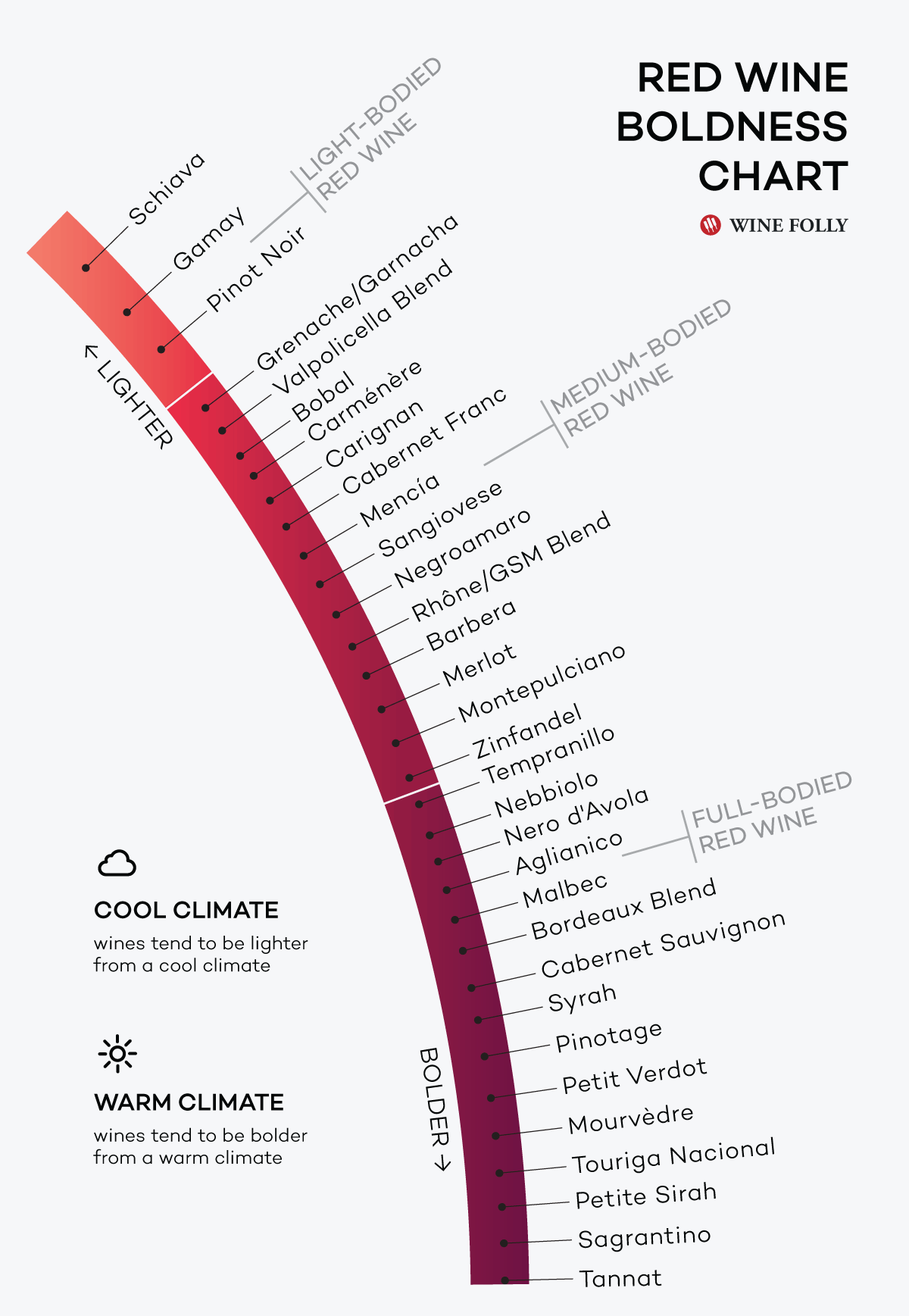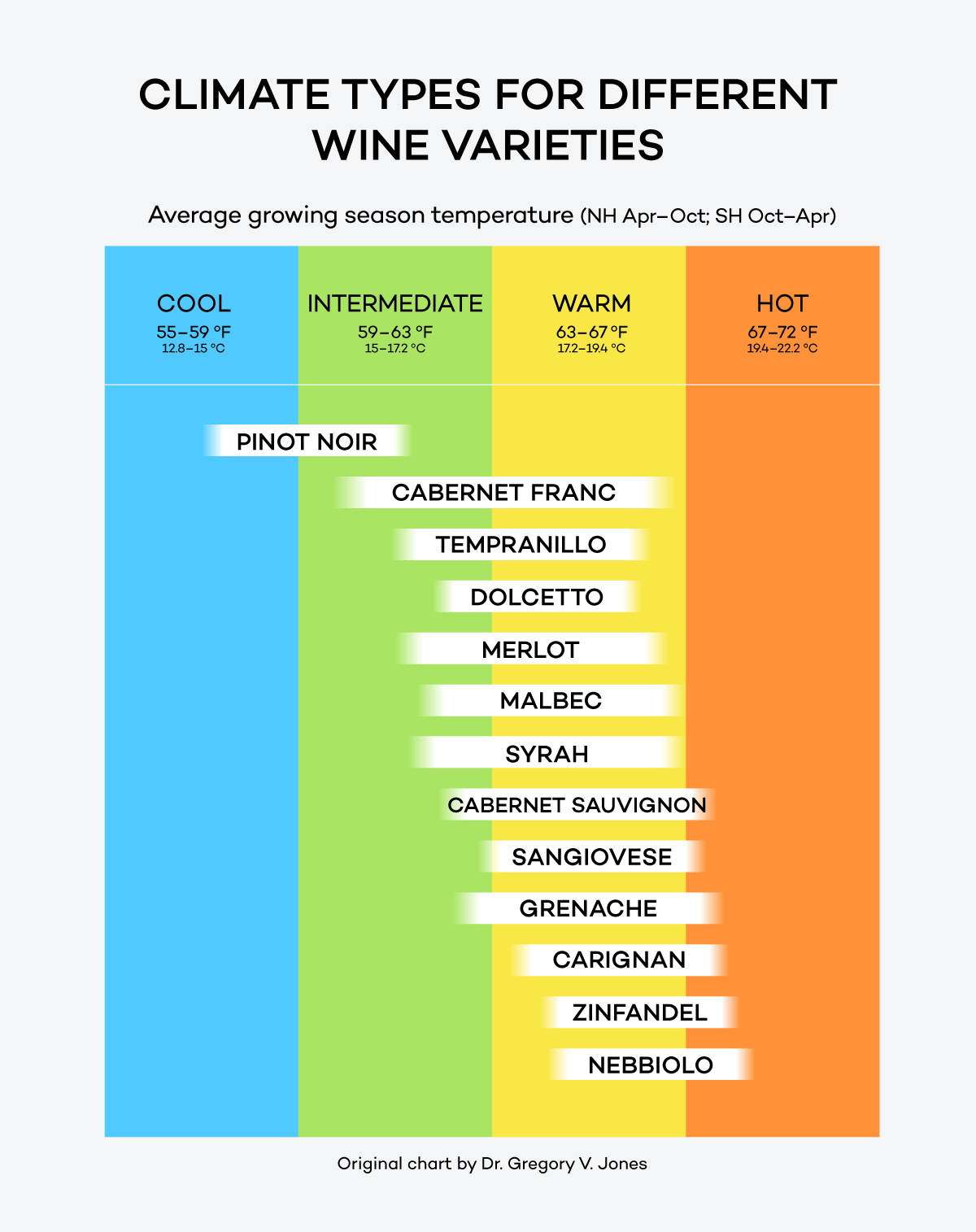Identify similar-tasting red wines based on their intensity from lightest to boldest.
Red Wines from Lightest to Boldest

Just 32 red wine varieties make up the majority of the wine available in the marketplace. If all red wines were placed on this chart, there would be hundreds!
By the way, it’s possible to find a wine that doesn’t exactly match the depiction. Still, this chart helps discover which red wines are bolder than others.
Where Does Boldness in Wine Come From?
A combination of several fundamental traits in wine define how bold it is. For example, the tannin level in wine indicates boldness and so does alcohol level. Higher alcohol wines tend to taste bolder.
On the other hand, wines with lower alcohol, less tannin, and higher acidity are lighter-bodied.
Another common way to identify a wine’s position in the spectrum has to do with its dominant fruit characteristics:
- Wines with red fruit flavors tend to have a lighter body.
- Wines with black fruit flavors tend to have a fuller body.
Tips: Wines may taste different than depicted depending on where they’re grown and how they’re made.

Climate Affects Boldness in Red Wine
The fascinating thing about wine grapes is the wide range of climates in which they can grow. However, you’ll notice that certain varieties grow only in cool climates and vice versa. Cooler climates tend to produce lighter red wines with higher acidity.
Here are a few useful takeaways from this chart:
- Pinot Noir does not appear to grow alongside Cabernet Sauvignon.
- Cabernet Franc can have a higher stylistic range based on its ability to grow in varied climates.
- Merlot can grow in cooler climates than Cabernet Sauvignon.
- Bolder wines tend to come from warmer climates.
- Lighter-bodied wine varieties tend to grow in cooler climates.
